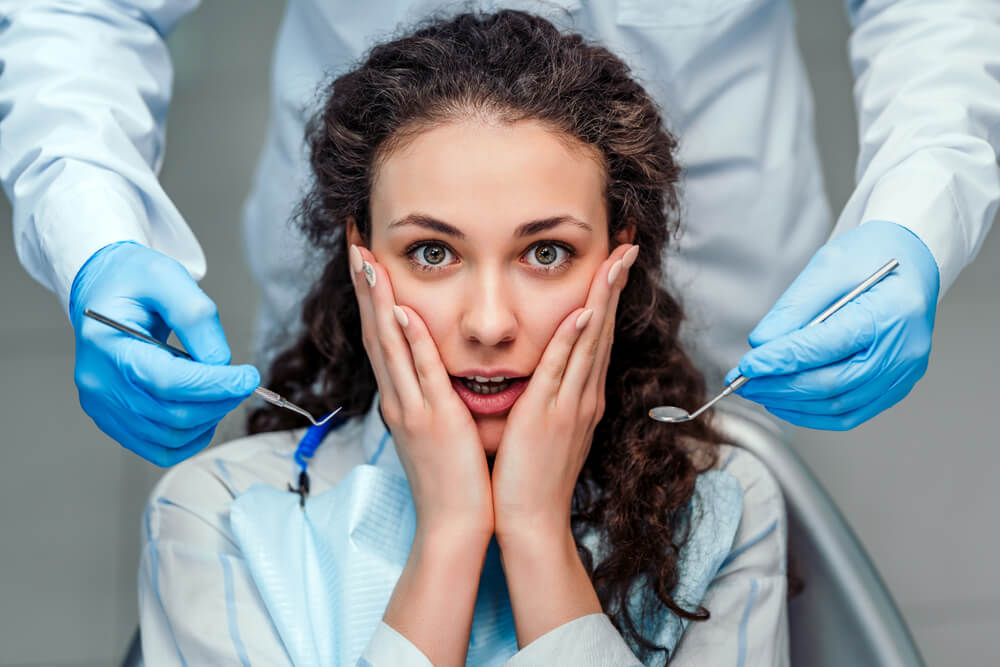If a gum abscess pops by itself, it can bring a mix of relief and concern. This unexpected event often raises questions about the underlying cause, potential complications, and the necessary steps to ensure proper healing and oral health. An abscess on the gum is a clear sign of infection, and when it ruptures spontaneously, immediate attention and care are crucial to prevent further issues.
This article aims to lead you through understanding why a gum abscess might burst on its own, the implications for your poor dental health and wellness, and the critical actions to take following such an incident. Engaging with this topic will enlighten you about the immediate measures and emphasize the importance of professional dental intervention in such situations.
Understanding Gum Abscesses Causes
Understanding the causes of gum abscesses is crucial for preserving optimal oral health and preventing serious complications. Gum abscesses, often resulting from bacterial infections in the mouth, are primarily linked to poor dental hygiene, tooth decay, and gum disease. These abscesses form when bacteria invade the soft tissues of the gum, leading to the accumulation of pus and infection. Without proper care, this condition can cause throbbing pain, swelling, and further oral health issues.
Poor Dental Hygiene: Neglecting regular brushing and flossing allows plaque and bacteria to aggregate, increasing the risk of gum abscesses.
Tooth Decay and Gum Disease: Untreated cavities and periodontal disease create pockets where bacteria can thrive and infect the gums.
Compromised Teeth: Broken teeth or failed dental work can expose the gum to bacterial infection, leading to abscess formation.
Gum Abscesses Symptoms
Identifying the symptoms of gum abscesses is key to early detection and prompt treatment, which are crucial steps in preventing the progression of infection and ensuring oral health. Gum abscesses manifest through a range of signs that signal the presence of an underlying infection in the gums, which can extend to the teeth and surrounding oral tissues if left unaddressed. Awareness of these symptoms enables individuals to seek timely dental care, averting further complications and promoting healing.
Pain and Discomfort
A hallmark symptom of gum abscesses is a throbbing, persistent pain localized to the affected area, which may worsen when chewing or applying pressure.
Swelling and Redness
The gum around the abscess typically becomes swollen and red, indicating inflammation and infection.
Pus Accumulation
A visible sign of a gum abscess is the accumulation of pus, which can lead to a pimple-like swelling on the gum that may rupture and drain.
Bad Taste and Odor
As the abscess drains, it can release pus into the mouth, creating an unpleasant taste and odor.
Fever and General Discomfort
Sometimes, a gum abscess can cause systemic symptoms like fever and a general feeling of unwellness, reflecting the body’s response to the infection.
Swollen Lymph Nodes
The infection can cause lymph nodes around the neck and jaw to swell as the immune system fights the infection.
Why a Gum Abscess Might Pop by Itself: The Science Behind the Spontaneous Rupture

Understanding why a gum abscess might pop by itself involves delving into the science of spontaneous rupture. This phenomenon occurs when the pressure within the abscess cavity reaches a critical point. Gum abscesses form a defense mechanism against infection, trapping bacteria and pus in a contained space. Over time, the body’s immune response and the ongoing accumulation of pus increase the pressure inside this space. When the abscess wall can no longer withstand this pressure, it may rupture spontaneously, providing a natural but temporary relief from pain and discomfort.
Pressure Build-Up
The continuous accumulation of pus and bacteria increases internal pressure within the abscess cavity, potentially leading to spontaneous rupture.
Immune Response
The body’s immune system fights the infection, contributing to the build-up of pus and dead tissue, which adds to the pressure.
Weakening of Abscess Wall
Over time, the abscess wall can weaken due to the ongoing infection and pressure, making it more susceptible to rupturing.
Natural Drainage Pathway
A spontaneous rupture creates a natural drainage pathway for the pus, relieving pressure and reducing pain temporarily.
Immediate Relief Followed by Risks
While the initial rupture may relieve pain, it exposes the mouth to the risk of spreading infection, underlining the need for professional dental care.
Immediate Actions to Take After a Gum Abscess Bursts
When a gum abscess bursts, immediate actions are crucial to manage the situation and prevent further complications. This unexpected rupture can temporarily relieve pain and expose the oral cavity to potential risks, including spreading infection. Understanding the steps to take immediately after a gum abscess bursts can help mitigate these risks and pave the way for proper healing and recovery.
Rinse Your Mouth: Gently rinse your mouth with a saline solution or warm salt water to clean the affected area. This can help remove pus and debris while reducing bacterial load.
Avoid Agitating the Area: Do not poke or prod the area with your tongue, fingers, or other objects to prevent further irritation or damage to gum tissue.
Apply Cold Compress: To alleviate swelling and discomfort, apply a cold compress externally to the cheek near the affected area.
Seek Dental Care Promptly: It is imperative to see a dentist as soon as possible. Professional assessment and treatment are necessary to address the underlying infection and prevent recurrence.
Follow Up with Proper Oral Hygiene: Continue with optimal oral hygiene practices, including gentle brushing and flossing around the area, to keep it clean and aid in healing.
Avoid Certain Foods: Avoid hot, spicy, cold, or hard foods that could irritate the burst abscess site.
Risks and Complications Following an Abscess Rupture

Understanding the potential risks and complications following an abscess rupture is critical for ensuring effective management and preventing adverse outcomes. While the immediate release of pressure from a burst gum abscess can bring relief, it also opens the door to several risks that can impact oral and overall health. Awareness of these risks is essential for seeking timely treatment and adopting measures to minimize complications, safeguarding one’s well-being.
Spread of Infection: The most significant risk following an abscess rupture is the potential spread of infection to surrounding tissues, the jawbone, or even into the bloodstream, causing more severe health issues.
Delayed Healing: An open wound in the mouth can be slow to heal and may become re-infected if not properly cared for, prolonging discomfort and recovery time.
Recurrence of Abscess: Without addressing the underlying cause of the abscess, there is a high risk of recurrence, leading to a cycle of abscess formation and rupture.
Resistance to Treatment: Repeated infections can become increasingly resistant to conventional treatments, making them harder to manage.
Damage to Surrounding Teeth and Tissues: The spread of infection from a ruptured abscessed tooth can damage nearby teeth and soft tissues, potentially leading to tooth loss or extensive dental work.
Seeking Professional Dental Care: When to See Your Dentist
Seeking professional dental care promptly is paramount when dealing with gum abscesses or oral health issues. While temporary measures can offer immediate relief, only a dentist can address the root cause of your dental health problems, ensuring comprehensive treatment and preventing further complications. Understanding when to see your dentist is crucial for maintaining optimal oral health and avoiding the progression of potentially serious conditions.
Presence of Pain or Discomfort: If you experience persistent or severe pain in your gums or teeth, it’s a clear sign that you must book an emergency dental appointment.
After an Abscess Bursts: Following the rupture of a gum abscess, it is essential to consult a dentist immediately to clean the area properly and treat the underlying infection to prevent recurrence.
Swelling or Redness: Visible signs of inflammation, such as swelling or redness in the gums, warrant a dental checkup to identify and address the cause.
Sensitivity to Temperature or Pressure: Increased sensitivity to hot or cold foods or biting pressures can indicate dental issues requiring professional attention.
Bad Taste or Odor: An unpleasant taste or odor in the mouth, especially after an empty dental abscess bursts out, suggests an infection that needs dental intervention.
General Oral Health Checkup: Regular dental visits, even in the absence of symptoms, are crucial for early detection of dental treatment and prevention of dental problems.
Preventive Measures to Avoid Future Gum Abscesses

Preventive measures are crucial in avoiding future gum abscesses, highlighting the importance of maintaining optimal oral hygiene and regular dental care. Gum abscesses, often resulting from bacterial infection due to poor dental hygiene or untreated dental issues, can lead to significant discomfort and potential health complications. By adopting a proactive approach to oral health, individuals can significantly reduce the risk of developing gum abscesses and ensure the longevity of their dental well-being.
Regular Dental Checkups: Scheduling routine visits to the dentist for professional cleanings and examinations can detect and address potential issues before they escalate into abscesses.
Proper Oral Hygiene: Brushing with fluoride toothpaste daily, flossing, and using an antiseptic mouthwash can significantly reduce plaque buildup and bacterial presence, the main culprits behind gum infections.
Healthy Diet: Limiting sugary and acidic foods, which contribute to tooth decay and gum disease, can prevent the conditions that lead to dental abscesses and formation.
Quit Smoking: Smoking is a major risk factor for gum disease, which can lead to abscesses. Quitting smoking can drastically improve oral and overall health.
Prompt Treatment of Dental Issues: Properly treating dental problems such as cavities, broken teeth, or gum disease can prevent the development of abscesses.
Use of Dental Guards: For those prone to grinding or clenching their teeth, a dental guard can prevent damage that might otherwise lead to infections and abscesses.
In conclusion, experiencing a gum abscess that pops by itself can be an alarming situation that underscores the importance of prompt dental procedures and appropriate oral care. This event signals the presence of an underlying infection and opens the door to potential risks and complications if not properly addressed. Seeking professional dental intervention is crucial to ensure the infection is thoroughly treated and to prevent future occurrences. You can effectively manage this dental emergency by understanding the causes, knowing the immediate steps to take, and familiarizing yourself with treatment options. Remember, maintaining good oral hygiene and regular dental checkups are key preventive measures to safeguard against the distressing scenario where a gum abscess pops, ensuring your oral health remains in optimal condition.
References
Dental. tooth abscesses – NHS
https://www.nhs.uk/conditions/dental-abscess/
Periodontal Abscess: Symptoms, Causes & Treatment
https://my.clevelandclinic.org/health/diseases/24573-periodontal-abscess
Tooth abscess – Symptoms & causes – Mayo Clinic
https://www.mayoclinic.org/diseases-conditions/tooth-abscess/symptoms-causes/syc-20350901
Abscess incision and drainage | healthdirect
https://www.healthdirect.gov.au/surgery/abscess-incision-and-drainage
Gum Abscess: Pictures, Treatment, Symptoms, Causes, and More
https://www.healthline.com/health/gum-abscess




